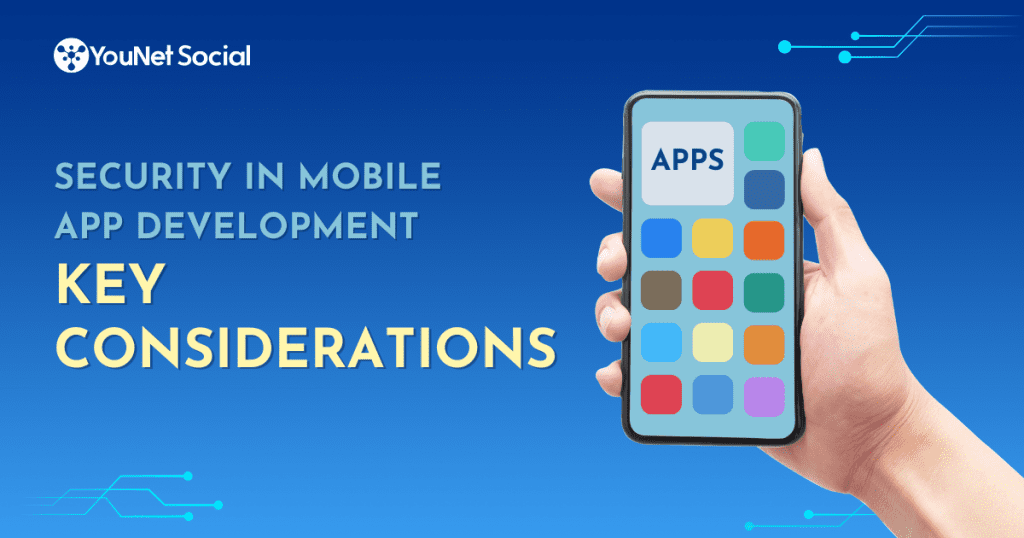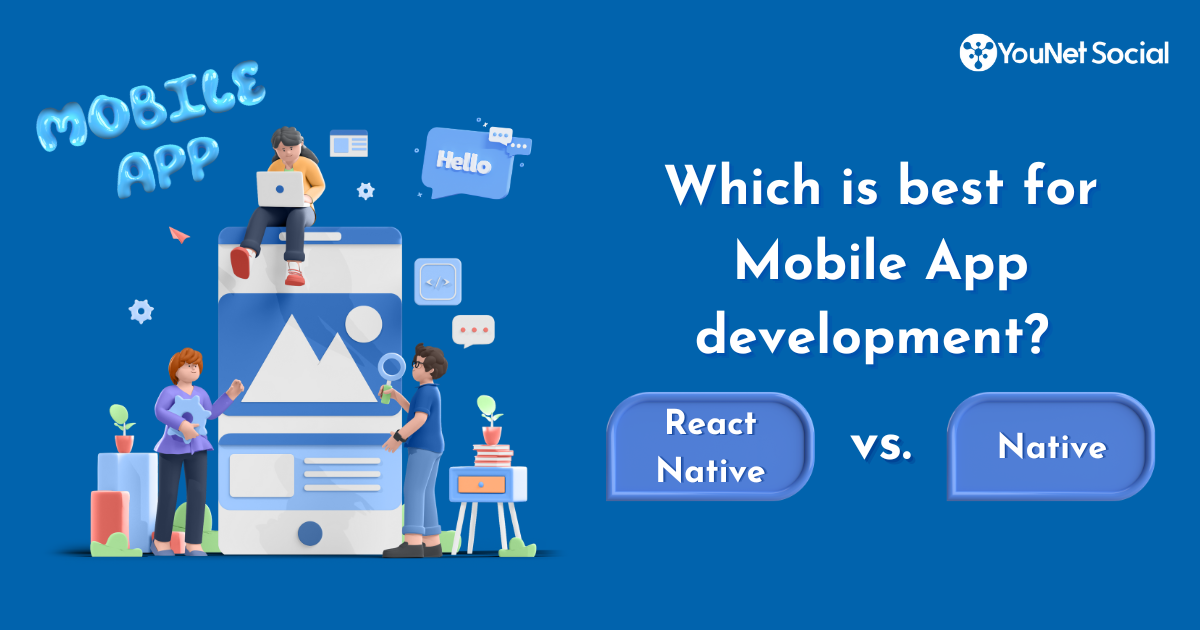With billions of mobile devices worldwide, the demand for innovative and user-friendly mobile applications has skyrocketed. This surge in mobile app usage has brought about a digital transformation in various sectors, from healthcare to finance and entertainment to education. However, as the mobile app landscape evolves, so do its security risks. Therefore, ensuring the robust security of mobile applications is a top requirement for developers to enhance user experience.
This discussion will explore the critical considerations and best practices for ensuring secure mobile app development.


The Increasing Demand for Mobile App Development
In recent years, the number of mobile app users has exponentially increased. There were approximately 3.48 billion smartphone users worldwide in 2021, projected to grow to 3.8 billion by 2024 (Source: Statista). This massive user base creates an ever-expanding audience for mobile app developers.
The demand for mobile apps is reflected in the staggering number of app downloads and the revenue generated by app stores. In 2020, global app downloads reached 218 billion, predicted to grow at a compound annual growth rate (CAGR) of 21.5% through 2025. App stores, including Apple’s App Store and Google Play, generated around $143 billion in consumer spending in 2020. This indicates the increasing demand for mobile apps and the thriving app economy.
The Importance of Security in Applications
With the proliferation of mobile apps, the attack surface for malicious actors has expanded significantly. The number of users and the volume of data exchanged within apps increase, providing opportunities for cybercriminals. Mobile apps have become attractive targets for various threats, including data breaches, malware, and unauthorized access, making it vital to prioritize security. It is a fundamental requirement to safeguard user trust, protect sensitive data, and ensure mobile apps’ long-term success and sustainability in a competitive market.
Critical Considerations in Ensuring Secure Mobile App Development
Threat Assessment
Mobile apps are susceptible to many threats, including data breaches, unauthorized access, phishing, and malware. Developers must be aware of these threats and understand the tactics and motivations behind them to defend against them effectively. Here are the common types of threats in mobile apps:
- Data Theft: Unauthorized access to and theft of sensitive user data.
- Malware: The injection of malicious software that can compromise an app’s integrity and user data.
- Insecure Authentication: Weak or flawed authentication processes can lead to unauthorized access.
- API Vulnerabilities: Weaknesses in the APIs used by the app, making them susceptible to exploitation.
- Phishing Attacks: Deceptive tactics to trick users into divulging personal information.
Secure Coding Practices
The importance of secure coding practices cannot be overstated. Clean and secure code forms the backbone of a robust mobile app security strategy. Secure code is the first defense against vulnerabilities. By writing code free from known security flaws, developers can significantly reduce the risk of exploitation.
Input Validation: Ensuring user input is validated and sanitized to prevent injection attacks. This practice is crucial for preventing attacks like SQL injection and Cross-Site Scripting (XSS).
- SQL Injection Prevention: Use prepared statements or parameterized queries to treat user input as data, not code, and reject potentially malicious input.
- XSS Prevention: Escape user-generated content to block malicious code execution on web pages.
Output Encoding: While input validation focuses on incoming data, output encoding concerns data sent back to users. Encoding output to prevent cross-site scripting (XSS) attacks.
- HTML and JavaScript Escaping: When outputting user-generated content, it’s essential to encode the data correctly to ensure that any HTML or JavaScript code in the content is treated as plain text.
Secure Data Storage: Safeguarding user data by encrypting and securely storing it on the device. It is a top priority for mobile app developers.
- Data Encryption: Encrypt data at rest using solid algorithms to prevent unauthorized access in case of device loss or theft.
- Key Management: Securely store and manage encryption keys to prevent unauthorized access by attackers.
Error Handling: Effective error handling is not just about handling system errors but also preventing the exposure of sensitive information in error messages.
- Custom Error Messages: Use generic error messages in production environments to prevent attackers from learning about system vulnerabilities.
- Logging and Monitoring: Capture and analyze error data for system improvement while safeguarding sensitive information.
Session Management: Managing user sessions securely to prevent unauthorized access.
- Session Tokens: Use secure, unpredictable tokens, transmit them securely, and invalidate them after user logout or timeout.
- Authentication Tokens: Employ encrypted, signed tokens to prevent tampering or forgery.
- Session Timeout: Automatically log out users after inactivity to reduce unauthorized access risk.
Secure APIs
Mobile apps often rely on Application Programming Interfaces (APIs) to interact with external services. Securing these APIs is a critical part of ensuring overall app security. APIs facilitate communication between the app and external servers, databases, and services. Insecure APIs can expose apps to various threats, making their security a top priority.
Developers should follow best practices when implementing and securing APIs, such as:
- Authentication and Authorization: Implementing proper authentication and access control for API endpoints.
- Rate Limiting: Limiting the number of requests that can be made to the API to prevent abuse.
- Secure Communication: Ensuring data transmitted between the app and the API is encrypted.
- Regular Testing: Periodically testing and auditing the security of APIs to identify and rectify vulnerabilities.
Tips for Enhancing the Security of Mobile App Development
Regular Security Audits
Security audits are like routine health check-ups for your mobile app. They are designed to identify vulnerabilities, weaknesses, and potential threats before malicious actors can exploit them. A successful security audit for a mobile app involves analyzing potential risks, conducting penetration testing, implementing comprehensive logging and monitoring systems, and scheduling regular follow-up audits.
Penetration Testing
Penetration testing, or “pen testing,” mimics real-world cyberattacks to find app vulnerabilities. Ethical hackers simulate security breaches, assessing an app’s ability to withstand threats.
Penetration testing serves several critical purposes:
- Identifying Weaknesses: By emulating attackers, penetration testing uncovers vulnerabilities in your app that may not be apparent through other testing methods.
- Security Validation: It assures that the security measures are effective and adequate to protect the app.
- Risk Reduction: Discovering and fixing vulnerabilities through penetration testing reduces the risk of security breaches and associated costs.
Security Updates and Patch Management
Mobile app security is an ongoing commitment. Timely updates and patches are essential to address newly discovered vulnerabilities. Hackers continually seek and exploit security weaknesses, and developers must be equally vigilant in safeguarding their apps. Following these below strategies to manage security updates effectively:
- Stay Informed: Keep abreast of security news, vulnerabilities, and patches related to your app’s technology stack.
- Regularly Update Dependencies: Ensure your app’s libraries, frameworks, and components are up-to-date.
- Automate Updates: Implement automation for routine updates to minimize the risk of oversight.
- Test Updates: Before deploying updates, thoroughly test them to ensure they do not introduce new issues.


User Education
Consider implementing in-app security tips and guidelines to promote user awareness and security. These can include:
- Password Strength Tips: Encourage users to create strong, unique passwords.
- Security Reminders: Periodically remind users about the importance of updating their passwords.
- Phishing Awareness: Offer guidance on recognizing and avoiding phishing attempts.
- Privacy Settings: Show users how to set privacy preferences within your app.
Conclusion
In a digital landscape where mobile apps are integral to daily life, the paramount importance of security cannot be overstated. It underpins trust, data protection, and the reputation of users and organizations alike. Developers and organizations can create secure, trustworthy mobile apps by embracing key considerations and best practices. However, security is an ever-evolving field, demanding continuous vigilance and adaptation to new threats. In this dynamic environment, safeguarding user trust and app integrity requires ongoing commitment and a proactive approach to security.
At YouNet Social, we provide our mobile app development service that ensures your development project with additional options such as UX/UI Design, Quality Assurance, and Online Community Consulting. With our seasoned experts, we are confident to provide the best services for your needs.




